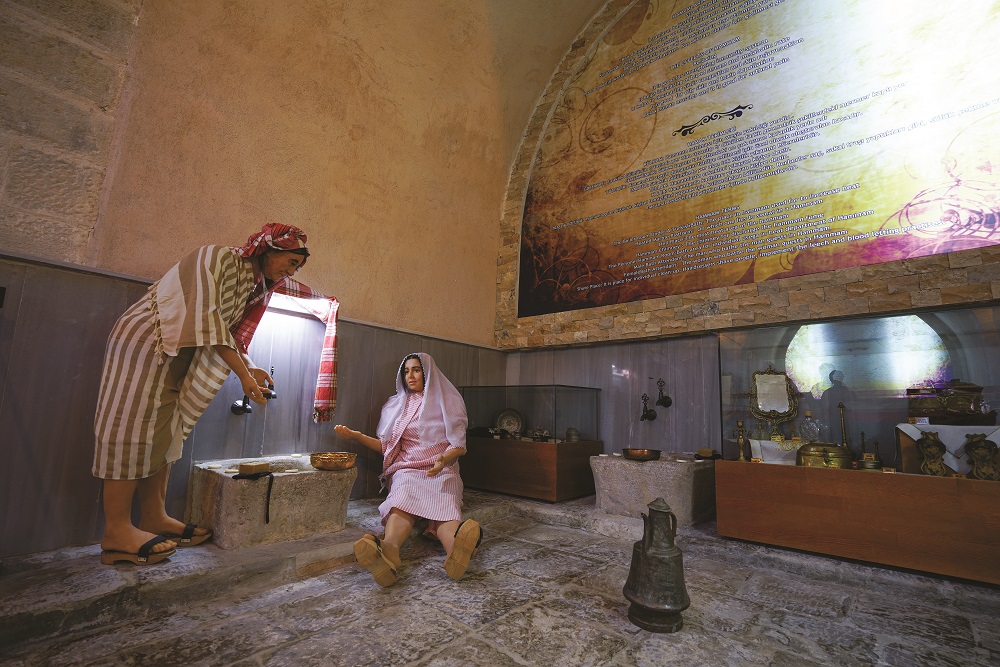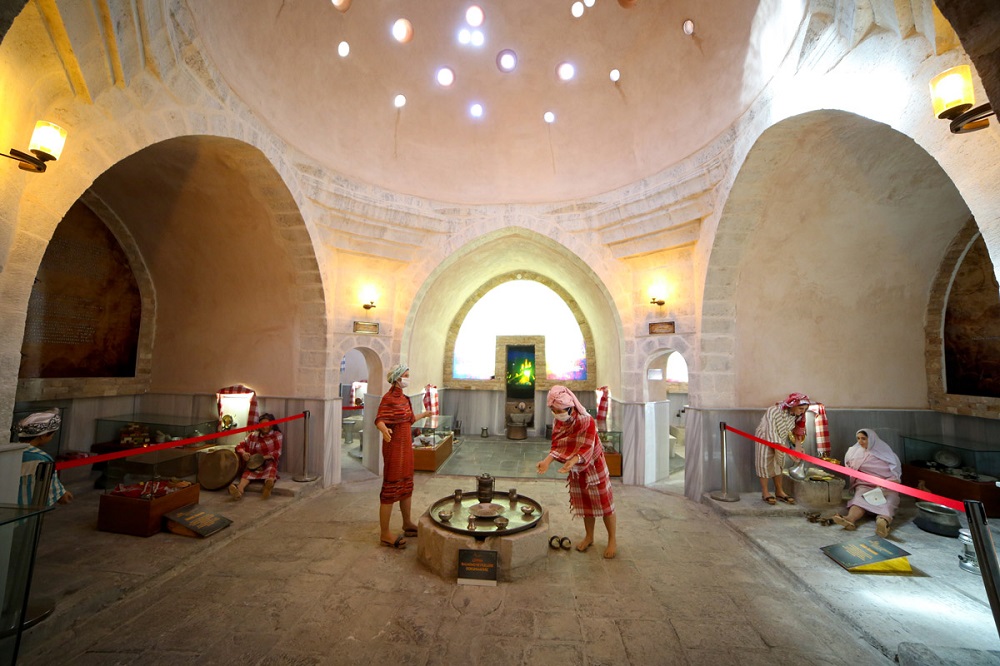Tahtalı Hamam Museum is located in the Büyük Mustafa Paşa Neighborhood in the Battalgazi district of Malatya. The structure, an architectural work from the 19th-century Ottoman period, serves as a museum today.
Architectural Features and History
The hamam (Turkish bath) was built in a south-north direction and has a "cruciform (haçvari) four-iwan (eyvan) plan with corner halvet (private room) cells." The structure consists of sections such as a changing room (soyunmalık), warm room (ılıklık), hot room (sıcaklık), material, and water reservoir. Tahtalı Hamam is important both for reflecting the cultural texture within the neighborhood and for having reached the present day more protected and intact compared to similar examples.

Tahtalı Hamam Museum (Malatya Valiliği)
The architecture of the hamam has features such as a pointed arch (sivri kemer), a door with a flat lintel arch (düz atkı kemerli kapı), a dome (kubbe) seated on squinches (tromplar), a round-arched door (yuvarlak kemerli kapı), and a cruciform four-iwan plan with corner cells. The surroundings of the structure's crown gate (taç kapısı), its sides, corners, and arches are made of cut stone (kesme taştan), while its exterior facade is made of rough-hewn stone (kaba yontu). Its interior part consists of rubble (kırma) and aggregate (moloz) masonry, while its upper covering (üst örtüsü) is entirely rubble stone; brick was used in the walls of the rooms in the changing room. The preservation of these architectural features and its hamam characteristics by the hamam was effective in the structure being evaluated as a "Hamam Museum."
The restoration work on the hamam, whose deed (tapusu) was acquired by the Battalgazi Municipality in 2014, was completed in 2018, and it was converted into a museum. Functioning this historical hamam, which has the quality of an immovable cultural asset, as a museum with a hamam collection is considered an appropriate decision. This decision prevented it from being damaged by remaining idle and provided a positive development for the protection of cultural heritage.
Museum Concept and Exhibition Methods
The Tahtalı Hamam Museum is important in terms of conveying the place and importance of water in the daily life of Ottoman society and the traditions and customs belonging to the hamam culture to the visitor. In the museum, a contemporary museology approach with high audience-oriented interaction has been adopted, rather than traditional object-oriented display. This approach has enabled the museum to gain a democratic, participatory, and functional quality.
The museum has organized its object collections based on "narrative" or "stories," and the storytelling (hikâyeleme) technique was utilized in the exhibitions. In this way, it becomes easier to convey the hamam culture and the characteristics of the period to the audience.
In the museum, traditional rituals belonging to the hamam culture have been brought to life (canlandırılmıştır) with materials such as wax sculptures, hamam bowls (hamam tasları), clogs (takunyalar), soaps, and kildans (clay containers). Among these reenactments (canlandırmalar) are rituals belonging to the old hamam culture such as the Groom's Hamam (Damat Hamamı), Soldier's Hamam, Circumcision Hamam, Forty Days Hamam , Rich Person's Hamam, Girl Viewing, and Bride's Hamam. For example, in the Rich Person's Hamam section, the bathing of statesmen or wealthy individuals called "kübera," who bathed in the bazaar hamams (çarşı hamamları) to integrate with the public despite having hamams in their mansions, and the going of women with sons of marriageable age to the hamam to look at unmarried girls and choose a bride (gelin seçmek) in the "bride candidate selection" ("gelin adayı seçme") section, have been presented using the storytelling method.

Tahtalı Hamam Museum (Malatya Valiliği)
Technological Applications
The Tahtalı Hamam Museum has become a "living museum" that utilizes computer technologies and smart devices, showing the effect of the technology age. The museum distinguishes itself from other museums by using hologram technology in the halvet and water reservoir sections.
The contemporary exhibition methods applied are as follows:
- Reenactment rooms where simulation techniques and moving platforms are configured.
- Three-dimensional displays with visuals, sound, and effects, models, and dioramas.
- Three-dimensional showcase arrangements and demonstration rooms-reenactments.
Furthermore, an "Oral History Room" ("Sözlü Tarih Odası") has been created where the history of the hamam and information related to the hamam are presented to visitors in an electronic environment. The lighting in the museum has been adjusted to suit the story of the objects; a more natural appearance has been obtained by also utilizing the dim light provided by the lighting windows in the structure's dome.
The high number of visitors due to its central location contributes to socio-cultural sustainability in terms of recognizing both tangible cultural assets and intangible cultural heritage and transferring them to future generations.


